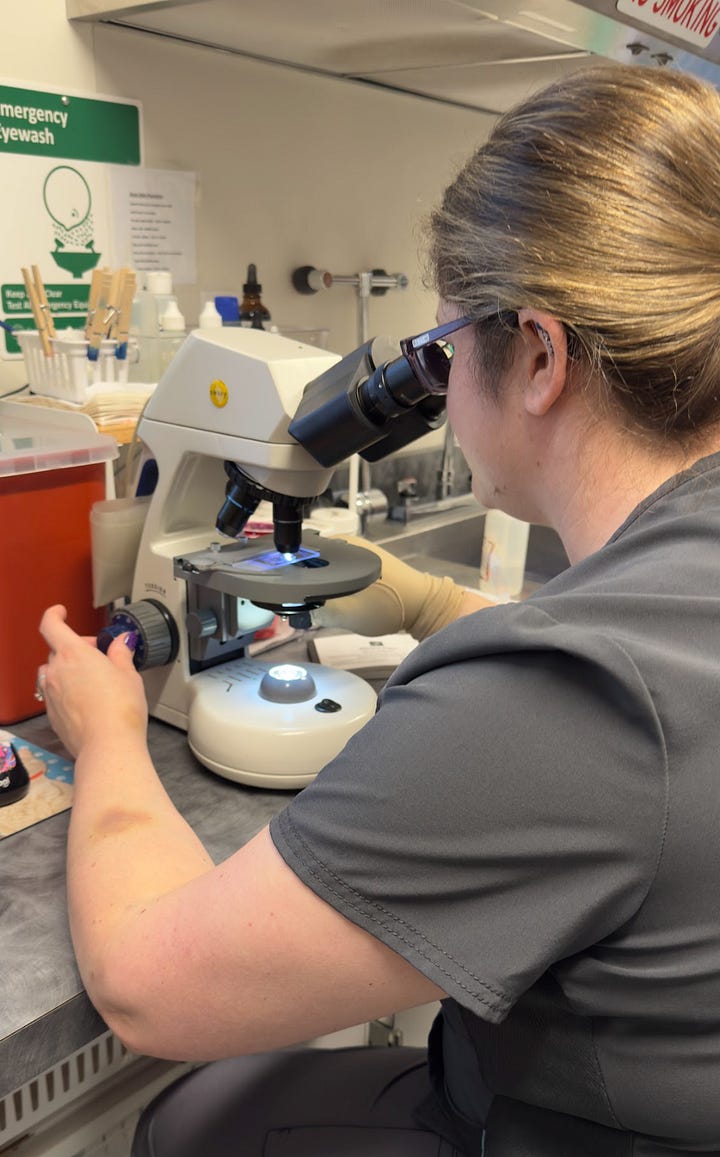"Is My Vet Just Trying to Make Money?" The Truth Behind the Exam Room Door
Owning a pet comes with deep joy—unconditional love, playful companionship, and a bond like no other. But when that beloved pet becomes ill, stress, fear, and uncertainty often take over. At that moment, both pet owners and veterinarians want the same thing: relief from pain, answers, and a path forward. But how we each “see” the situation can sometimes differ—and that’s where the idea of a Spectrum of Care comes in.
What Is the Spectrum of Care?
In veterinary medicine, Spectrum of Care is a newer term, but its principles are timeless: it means providing a range of diagnostic and treatment options that consider a pet’s medical needs alongside the owner's financial, emotional, and situational realities.
It’s not a one-size-fits-all approach. It’s a collaborative, respectful conversation where both the veterinarian and the pet owner work together to find the best possible outcome within the circumstances. Think of it as building a medical puzzle—sometimes you can gather every piece; other times, you must choose the most important ones to see the bigger picture.
Where Disconnect Happens
As a veterinarian, I’ve seen it countless times: A pet is brought in for vomiting and not eating. To an owner, it may seem like their dog is “just a little off.” But on examination, I might find a sky-high heart rate, poor circulation, and a painful, distended belly—signs that point toward a possible intestinal blockage, something we call a "foreign body." In that moment, I know we may be on the clock to save a life.
But from the client’s perspective, the shift from “tummy trouble” to “critical emergency” can be jarring. They may wonder: Is my vet overreacting? Are they trying to scare me? Or up-sell unnecessary tests?
The truth is, animals hide pain and illness well—it’s a survival instinct. In the wild, looking weak makes them vulnerable. That’s why what may seem “mild” on the outside is often far more serious on the inside.
The Challenge of Choices
In an ideal world, we would run every diagnostic test, perform every scan, and give every treatment immediately. But medicine doesn’t work in a vacuum—and neither do budgets.
For example, with our vomiting dog, the gold standard would be bloodwork and x-rays. But if that’s financially out of reach, we might start with x-rays alone to rule out life-threatening blockages. If nothing critical shows up, we could move forward with supportive care—IV fluids, anti-nausea meds, and pain control—knowing we’re doing our best with limited puzzle pieces.
This isn’t corner-cutting. It’s thoughtful, compassionate decision-making within a real-world framework.
Why Communication Matters
If you’re a pet owner reading this, here’s my best advice: Be honest with your vet about your concerns—medical and financial. Not because we want to spend your money, but because we want to help your pet within what’s realistic for your situation.
Spectrum of Care doesn’t mean less medicine—it means smart, informed medicine that fits your life. It’s about trust, teamwork, and transparency.




The Hardest Moments
Sometimes, a diagnosis leads to treatments that are undeniably expensive—like emergency surgery. These are the moments that break hearts: when we know what to do, but the cost feels impossible. We understand. We feel it too. We love animals. That’s why we’re here.
In these moments, the Spectrum of Care might involve difficult conversations about options, timelines, support resources, or even humane euthanasia. None of this is easy—but being open, informed, and compassionate makes it survivable.
Final Thoughts
The Spectrum of Care model is not just a medical approach—it’s a philosophy of partnership. It recognizes the emotional weight of pet ownership and the financial reality of modern life. It doesn’t mean cutting corners—it means making thoughtful choices, together.
So the next time your pet is sick, and the conversation turns serious, remember: your veterinarian is not just there to treat your pet—they're there to support you, too.
Being part of your pet’s life is a privilege veterinary teams don’t take for granted—thank you for that trust.









A lovely piece of informative writing. In the UK we call it contextualised care. Thanks for sharing